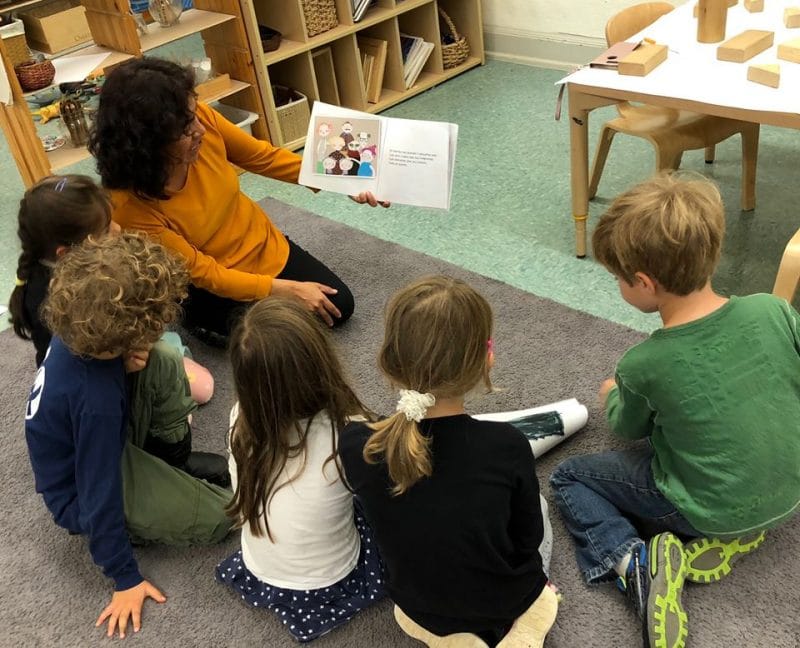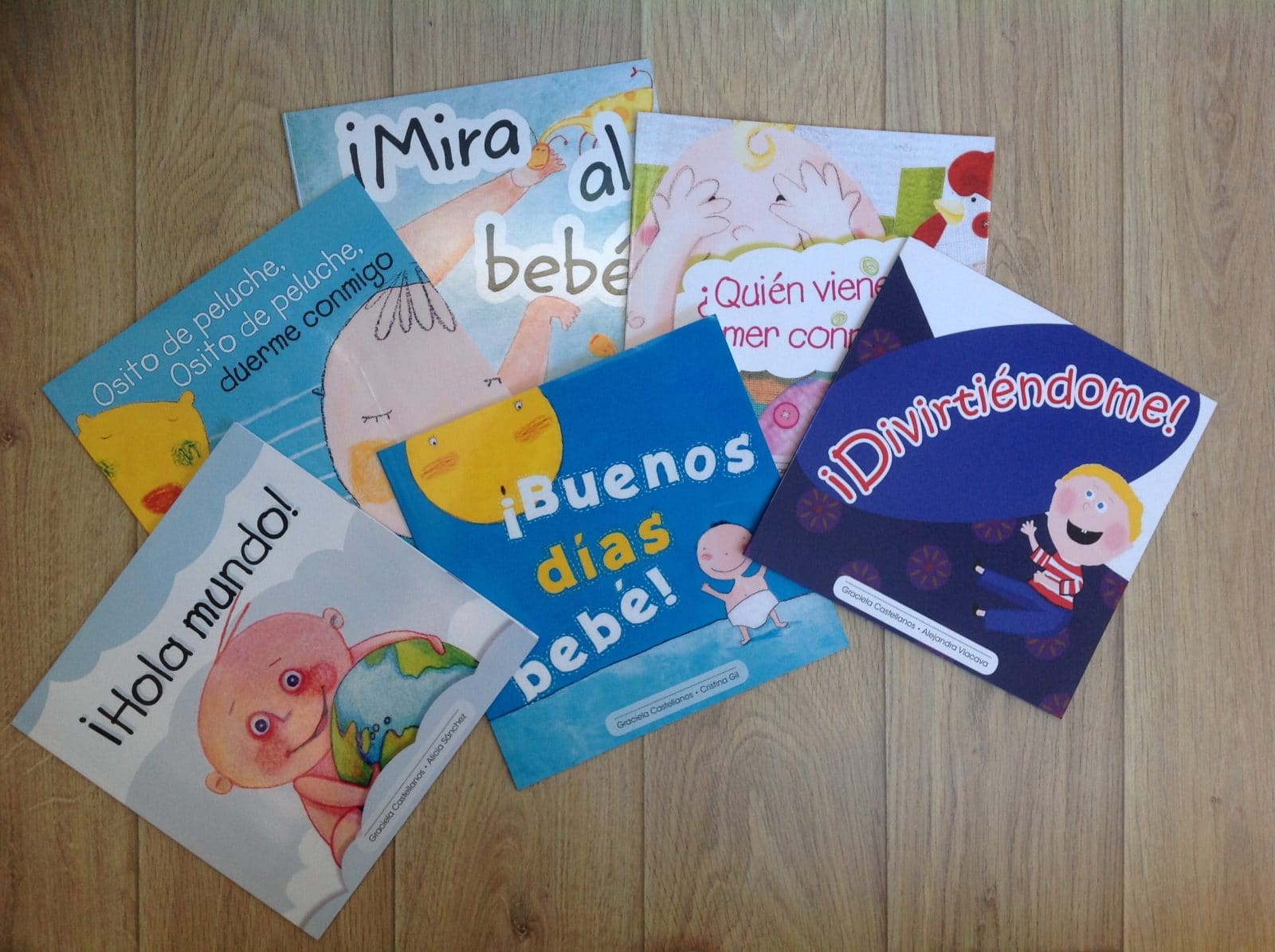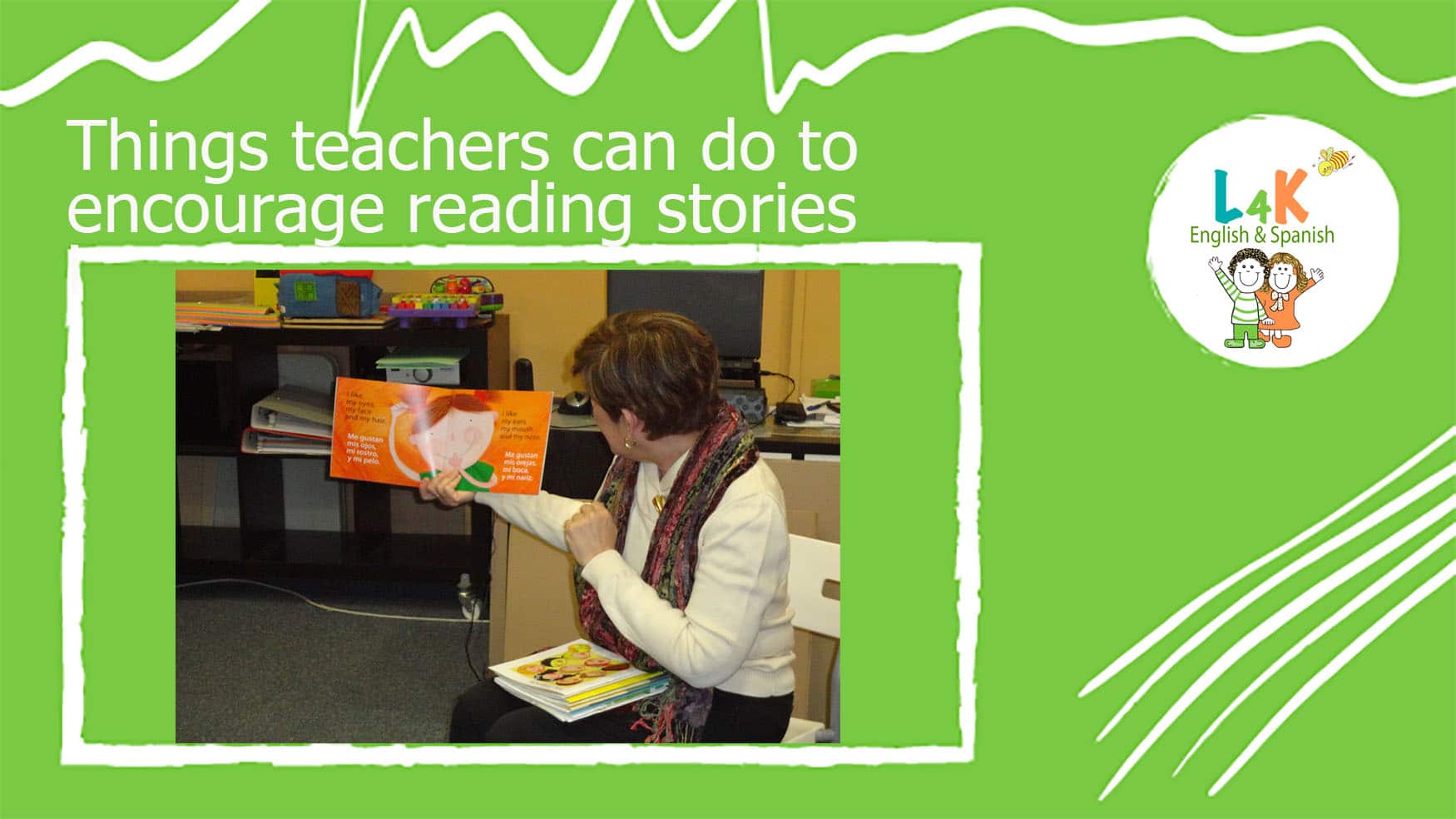Things teachers can do to encourage reading stories in a second language
 As you turn each page on the book allow some time for children to participate. Encourage them to speak about the pictures they see before you read the text. Encourage them to use their senses and experience the smells, sounds, and tastes that are presented in the book.
Reinforce their language skills. Help them put into words what they want to express. Establish a useful communication between you and your class.
When you finish reading the book, praise children for their active participation.
Follow the suggestions presented previously for making the reading more interesting and for captivating children’s attention.
Keep in mind that reading aloud to young children not only boosts speech and language development, but overall intelligence as well.
When you finish reading put away the story book and fold the story blanket with the help of children in your group. Chant adiós to the book and the blanket.
Following are a few of the things that have worked for me:
As you turn each page on the book allow some time for children to participate. Encourage them to speak about the pictures they see before you read the text. Encourage them to use their senses and experience the smells, sounds, and tastes that are presented in the book.
Reinforce their language skills. Help them put into words what they want to express. Establish a useful communication between you and your class.
When you finish reading the book, praise children for their active participation.
Follow the suggestions presented previously for making the reading more interesting and for captivating children’s attention.
Keep in mind that reading aloud to young children not only boosts speech and language development, but overall intelligence as well.
When you finish reading put away the story book and fold the story blanket with the help of children in your group. Chant adiós to the book and the blanket.
Following are a few of the things that have worked for me:
- Read to children every day. Not only teachers but also parents.
- Have a classroom library with books in English and establish a loan system so children can take the books and read at home.
- Create linguistically rich environments.
- Organize literary events that promote the purchase of books.
- Make small fairs where the target language is the cornerstone and promote the culture, traditions and literature of the target language speaking countries.
- Invite different personalities and authors of children’s books to participate in reading events in schools.







